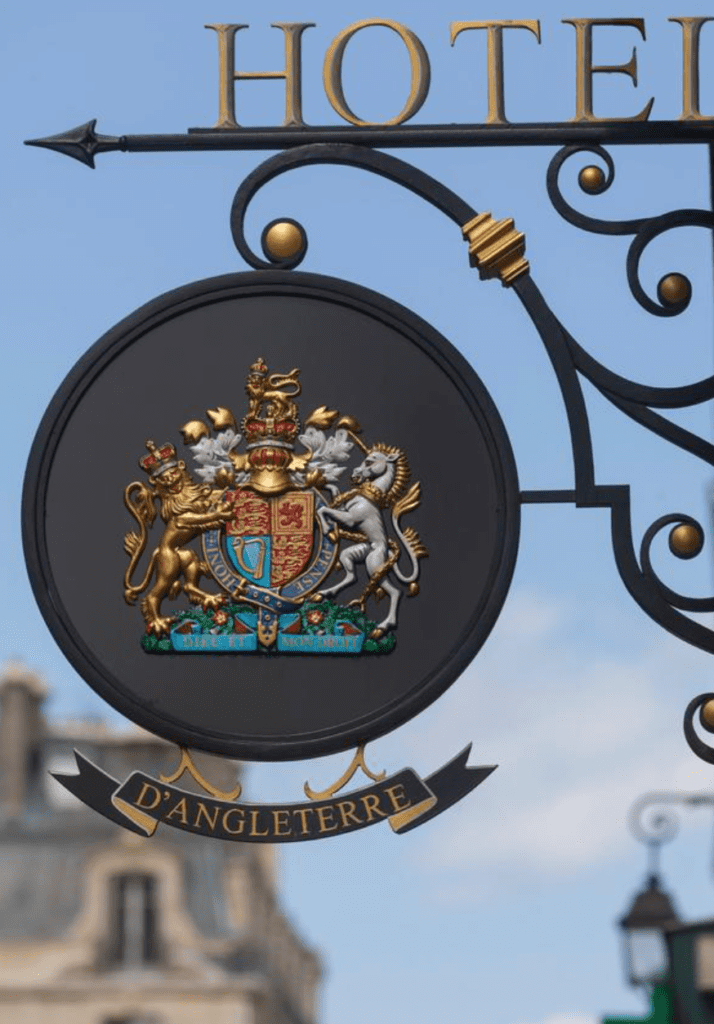Few writers are as linked to Paris as Ernest Hemingway. The city established his career, shaped and sharpened his writing style, and enhanced his appetite for life. He might have only lived in Paris for several years in the 1920s, but they were formative years, and the city stayed with him forever, as his second home. ‘There are only two places in the world where we can live happy: at home and in Paris,’ he once said.

To pay homage to the honorary Parisian, devote a day to the following itinerary. (And as for your after-dark options, Part Deux will list the author’s favourite Parisian drinking spots; stay tuned …)
Marché Mouffetard

Start at the southern end, just out front of the Église Saint-Médard (the closest métro station is Censier-Daubenton). Rue Mouffetard has long been both a street market and a market street — note the old mural on the façade of no.122, once a charcuterie, that speaks to the gastronomic history of this stretch. Buy a warm, flaky croissant and wander uphill. The market atmosphere extends well north, as shops spill onto the cobbled street, selling their various wares. Ernest wrote about this ‘wonderful narrow crowded market street’ in his love letter to Paris, A Moveable Feast, penned many years after he’d actually lived near here. The passage of time might have dulled his senses a little, as the district was down and out in those days. The street’s name is said to be derived from the Old French word for stink — in addition to the smell of general squalor around here was the stench of tanneries and butchers. It has gentrified somewhat these days but you can still sense the old village vibe, and picture Hadley Hemingway coming here to buy ingredients for leek soup, a standard dish for them as they struggled to survive in their early months in Paris.
Marché Mouffetard is closed Monday and Sunday afternoon.
Rue du Cardinal Lemoine

When you reach Place de la Contrescarpe, with its quartet of paulownia trees on the cobbled centre, head to the right of Café Delmas (once the Café des Amateurs, which Hemingway called a ‘cesspool’), onto Rue du Cardinal Lemoine. Stop at the cobalt-blue door of no.74; the plaque tells you that Ernest and Hadley lived in an apartment here from January 1922 to August 1923, when they were ‘very poor and very happy.’
Jardin du Luxembourg

Wind your way westwards, past the Panthéon, to the Luxembourg Gardens. Ernest often walked these streets as he was working towards his breakthrough novel The Sun Also Rises, and he’d often end up meandering around the allées of the Luxembourg, not just for the loveliness of the gardens but also because it meant that he could avoid restaurant aromas when he was ‘belly-empty, hollow-hungry.’ It’s easy to spend hours in this beautiful enclosure, weaving this way and that. And if you’re hollow-hungry yourself, dine beneath the chestnuts at Le Pavillon de la Fontaine. Also check out what’s on at the Musée de Luxembourg. It was in this museum, in the days when it showcased the Impressionists, that Ernest had a major ‘aha’ moment. Marvelling at Paul Cézanne’s work (which is nowadays at the Musée d’Orsay), Ernest realised he wanted his words to be like Cézanne’s brushstrokes: controlled, clear and concentrated, and understood that power was not in the detail, but in the suggestion between the lines.
Les Deux Magots

Just north of the Luxembourg Museum gate you’ll find Rue Férou. In 1927, Ernest moved into a luxurious apartment in no.6 with his second wife Pauline. He likely also attended Mass up at Saint-Sulpice; he had converted to Catholicism for her. Continue to walk north, this time along Rue Bonaparte, which runs by Place Saint-Sulpice. At Boulevard Saint-Germain, cross and take a seat en terrasse at Le Deux Magots, the famed café loved by so many literary types. Ernest would hone his observation skills here, and jot away in his notebook, drinking either a café crème or a sherry. Whether you’re in the mood for afternoon tea (the pâtisserie tray is to-die-for) or apéro, settle in for some good old-fashioned people-watching.
6, Place Saint-Germain des Prés 75006
Hôtel d’Angleterre

This was where Ernest and Hadley stayed on their first night in Paris, back when it was a modest establishment called the Hôtel Jacob. Their room, no.14, is still available for rent, although it’s decidedly more chic than shabby these days. If you can’t end the night with a splurge here, at least have dinner at one of Ernest’s old local favourites, Le Pré aux Clercs (just down the road, at 30, Rue Bonaparte 75006), which dishes up the kind of classic French comfort food (soupe à l’oignon and the like) that the francophile so relished.
44, Rue Jacob 75006

